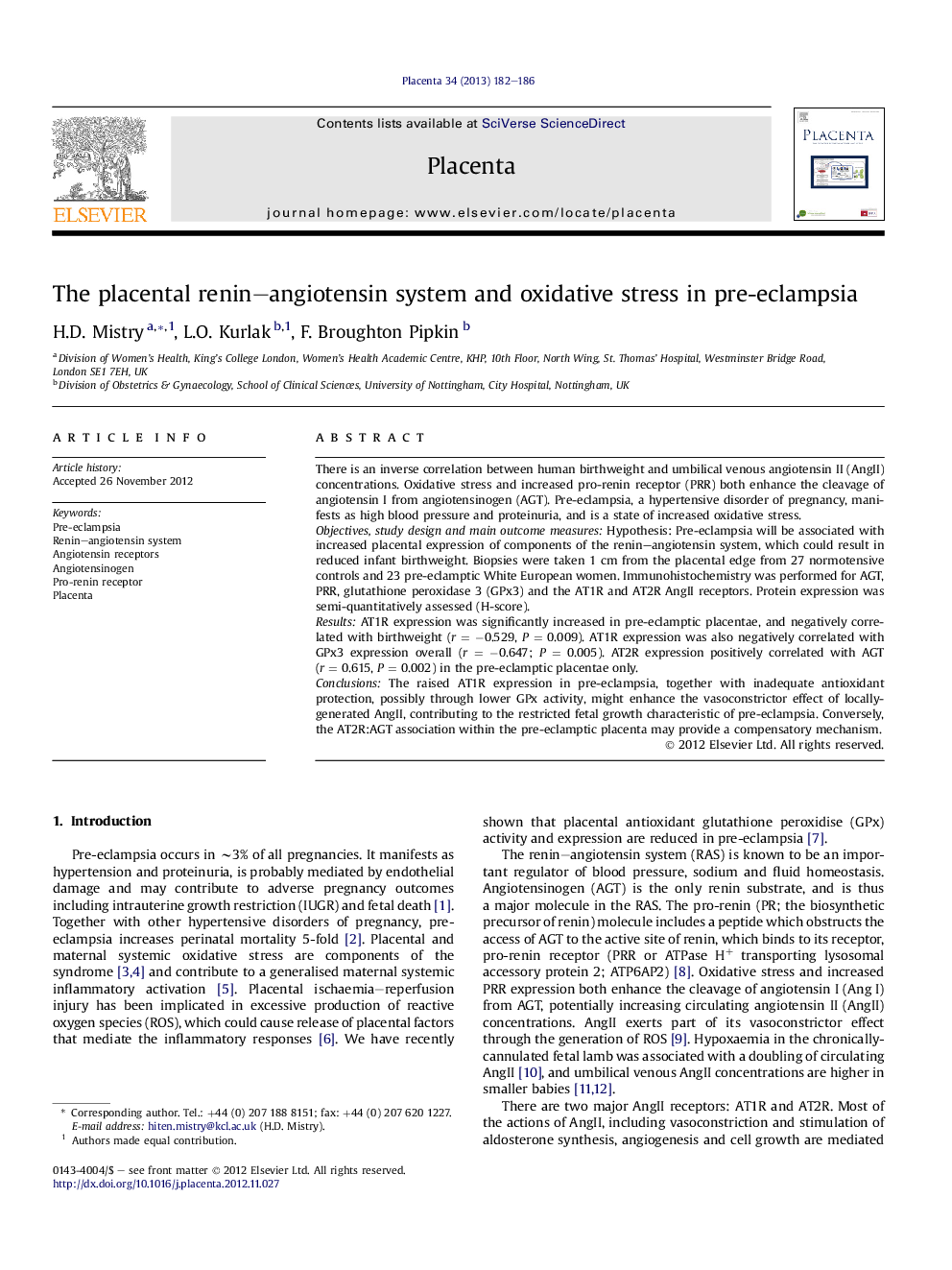| Article ID | Journal | Published Year | Pages | File Type |
|---|---|---|---|---|
| 5895643 | Placenta | 2013 | 5 Pages |
There is an inverse correlation between human birthweight and umbilical venous angiotensin II (AngII) concentrations. Oxidative stress and increased pro-renin receptor (PRR) both enhance the cleavage of angiotensin I from angiotensinogen (AGT). Pre-eclampsia, a hypertensive disorder of pregnancy, manifests as high blood pressure and proteinuria, and is a state of increased oxidative stress.Objectives, study design and main outcome measuresHypothesis: Pre-eclampsia will be associated with increased placental expression of components of the renin-angiotensin system, which could result in reduced infant birthweight. Biopsies were taken 1 cm from the placental edge from 27 normotensive controls and 23 pre-eclamptic White European women. Immunohistochemistry was performed for AGT, PRR, glutathione peroxidase 3 (GPx3) and the AT1R and AT2R AngII receptors. Protein expression was semi-quantitatively assessed (H-score).ResultsAT1R expression was significantly increased in pre-eclamptic placentae, and negatively correlated with birthweight (r = â0.529, P = 0.009). AT1R expression was also negatively correlated with GPx3 expression overall (r = â0.647; P = 0.005). AT2R expression positively correlated with AGT (r = 0.615, P = 0.002) in the pre-eclamptic placentae only.ConclusionsThe raised AT1R expression in pre-eclampsia, together with inadequate antioxidant protection, possibly through lower GPx activity, might enhance the vasoconstrictor effect of locally-generated AngII, contributing to the restricted fetal growth characteristic of pre-eclampsia. Conversely, the AT2R:AGT association within the pre-eclamptic placenta may provide a compensatory mechanism.
